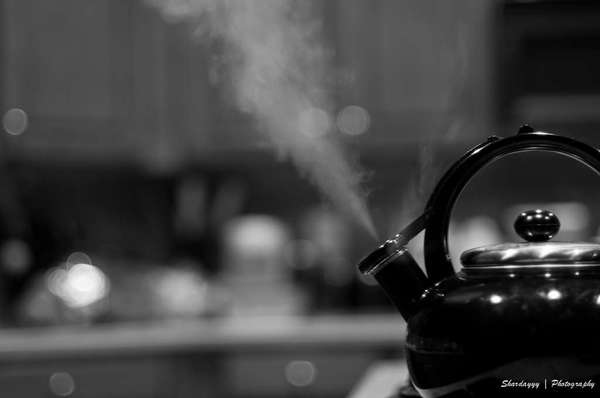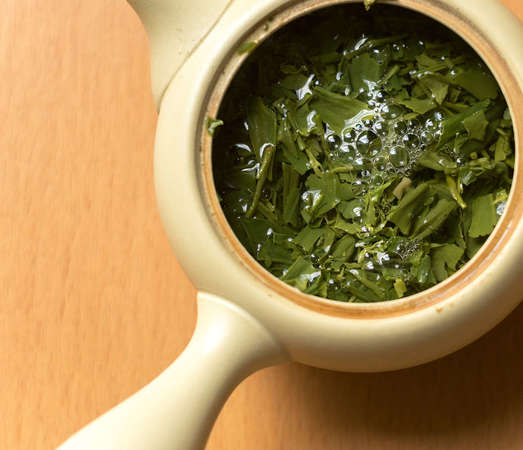Brewing Temperature for Tea
Last Updated: Aug. 3, 2017
 Some teas taste great when brewed with boiling water; others work best wiith lower water temperatures. Photo © Shardayyy, CC BY 2.0.
Some teas taste great when brewed with boiling water; others work best wiith lower water temperatures. Photo © Shardayyy, CC BY 2.0.Many websites, tea companies, and other sources will recommend simple, uniform guidelines for brewing temperature. These guidelines usually boil down to using boiling water (212°F or 100°C) for black teas and using cooler water, well below the boiling point, usually around 160-180°F or 71-82°C, for green teas. Some sources advise using intermediate temperatures for oolongs and delicate black teas like Darjeeling first flush, and usually, white teas are lumped in with green tea, with low brewing temperatures recommended. Experienced tea drinkers, however, usually find that ideal brewing temperature is much more complex.
This page goes into a bit more depth about brewing temperature, helping you to break out of the box of canned or uniform recommendations about what temperature of water to steep your tea with, so that you can discover on your own the way you like to brew each individual tea.
Our recommendations, only to serve as a starting point, are to use near-boiling water for most teas, but lower-temperature water with green teas, especially Japanese green teas, and with white and oolong teas from Darjeeling. We have found no evidence that most white teas are best brewed with lower-temperature water.
 Japanese green teas like this sencha are often sensitive to brewing temperature and best brewed with cooler water. Photo © Etienne FAT, CC BY 2.0.
Japanese green teas like this sencha are often sensitive to brewing temperature and best brewed with cooler water. Photo © Etienne FAT, CC BY 2.0.Teas can be more or less temperature sensitive
Some teas are highly sensitive to brewing temperature, with small changes in temperature resulting in large differences in the outcome of the brewed cup of tea. Such teas are often referred to as being fickle or finicky about brewing temperature, or just sensitive to brewing temperature.In extreme cases, teas can become foul tasting or undrinkable if steeped with water that is too hot. Usually, when water is used that is colder than ideal, the result is a blander cup. In the case of other teas, brewing temperature is less important; such teas are usually described as being easy to brew, or forgiving of changes in brewing temperature.

